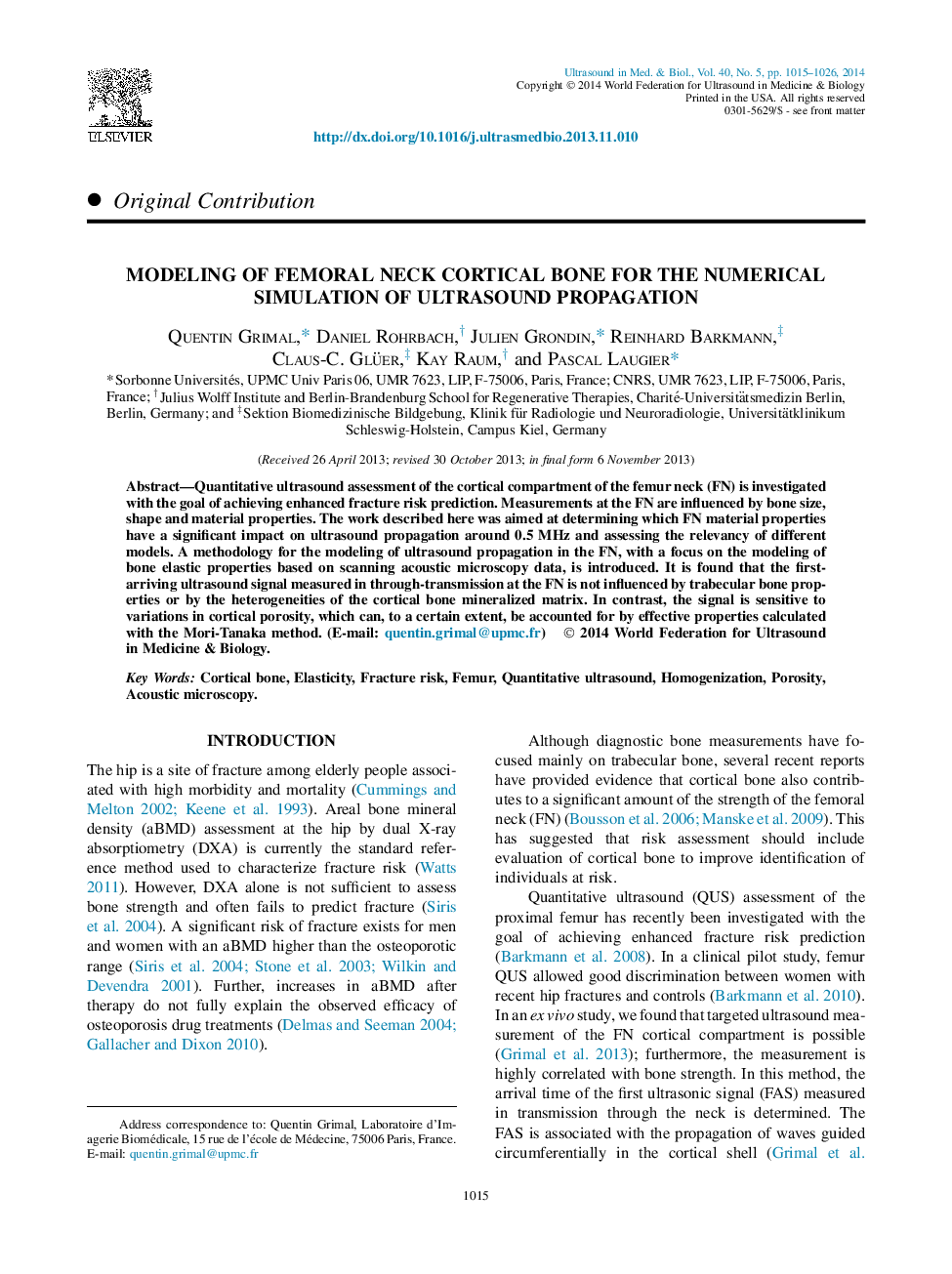| Article ID | Journal | Published Year | Pages | File Type |
|---|---|---|---|---|
| 10691686 | Ultrasound in Medicine & Biology | 2014 | 12 Pages |
Abstract
Quantitative ultrasound assessment of the cortical compartment of the femur neck (FN) is investigated with the goal of achieving enhanced fracture risk prediction. Measurements at the FN are influenced by bone size, shape and material properties. The work described here was aimed at determining which FN material properties have a significant impact on ultrasound propagation around 0.5Â MHz and assessing the relevancy of different models. A methodology for the modeling of ultrasound propagation in the FN, with a focus on the modeling of bone elastic properties based on scanning acoustic microscopy data, is introduced. It is found that the first-arriving ultrasound signal measured in through-transmission at the FN is not influenced by trabecular bone properties or by the heterogeneities of the cortical bone mineralized matrix. In contrast, the signal is sensitive to variations in cortical porosity, which can, to a certain extent, be accounted for by effective properties calculated with the Mori-Tanaka method.
Keywords
Related Topics
Physical Sciences and Engineering
Physics and Astronomy
Acoustics and Ultrasonics
Authors
Quentin Grimal, Daniel Rohrbach, Julien Grondin, Reinhard Barkmann, Claus-C. Glüer, Kay Raum, Pascal Laugier,
